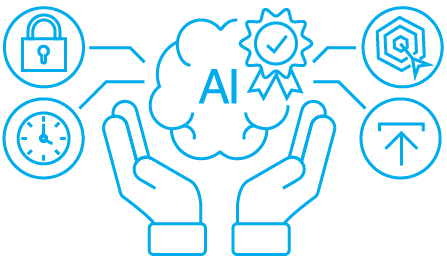- Introduction
- Understanding Data Curation in AdTech
- Direct Demand Generation
- Curation Activation
- Data Provider Integration in Curation
- Benefits of Data Curation in AdTech
- The Curation Process in AdTech
- The Future of Data Curation in AdTech
- Conclusion
Introduction
In the rapidly evolving landscape of digital advertising, data has become the lifeblood of effective campaigns. As the volume, velocity, and variety of data continue to grow exponentially, the AdTech industry faces the challenge of having access to valuable data sets that will enable advertisers, companies and brands to connect with their target audience. This is where data providers come in, offering solutions that address the complexities of fragmented audiences and help identify high-quality inventory amidst the vast digital landscape.
Understanding Data Curation in AdTech
Data curation in AdTech encompasses the comprehensive process of collecting, refining, and synthesizing information from diverse sources to power more effective advertising strategies. It goes beyond mere data management, focusing on enhancing the quality, relevance, and accessibility of data to drive precision in targeting, personalization, and campaign optimization.
The Two Pillars of Curation in AdTech
- Demand Generation: This involves creating and nurturing high-quality advertising opportunities.
- Activation: This refers to the process of leveraging curated data to execute targeted advertising campaigns.
Direct Demand Generation
Direct demand generation is a cornerstone of effective curation in AdTech, particularly for Supply-Side Platforms (SSPs). It involves:
- Connecting high-quality inventory directly with premium advertisers
- Ensuring targeted and efficient ad placements
- Hiring agency sales professionals to bolster direct demand capabilities
By focusing on direct demand, SSPs can better curate ad inventory, matching the most relevant ads with suitable audiences, thereby enhancing campaign performance and increasing ROI for advertisers.
Agency sales teams play a vital role in direct demand generation.They foster relationships with agencies and brands, allowing SSPs to optimize ad inventory curation. This results in improved ad-audience matching, enhanced campaign performance, and increased advertiser ROI. It also provides SSPs with better control over ad quality and relevance, ensuring brand safety. Ultimately, this creates a more secure and effective advertising ecosystem for both publishers and advertisers, while minimizing ad fraud.
Curation Activation
Curation activation in AdTech revolves around:
- Setting up Programmatic Marketplace (PMP) deals
- Integrating inventory and signals into transactions
- Leveraging curation platforms to enhance targeting precision
Even though Google has dedicated to not decline third-party cookies in 2025, at some point third-party cookies eventually are going to become obsolete, therefore curation stands out as the future of targeted advertising, allowing for more privacy-compliant and effective ad delivery.
Programmatic curation is an advanced digital advertising strategy that combines smart inventory management with precise audience targeting. It creates tailored Private Marketplaces (PMPs) that match specific advertiser needs, delivering these curated packages to demand-side platforms (DSPs) as easy-to-use Deal IDs. This approach enhances targeting, optimization, and overall campaign efficiency.
Data Provider Integration in Curation
While direct demand generation focuses on connecting inventory with advertisers, data providers play a crucial role in enhancing the curation process. These entities supply valuable audience insights, behavioral data, and contextual information that enrich the curation efforts. By integrating data from reputable providers, SSPs and publishers can:
- Improve audience segmentation for more precise targeting.
- Enhance the value of their inventory through better understanding of user interests and behaviors.
- Enable more sophisticated curation strategies, allowing for the creation of highly specific audience needs.
- Facilitate more effective matching between premium inventory and relevant advertisers. This integration of other data into the curation process helps create a more robust and nuanced advertising ecosystem, ultimately leading to better performance for advertisers and increased yield for publishers.
Benefits of Data Curation in AdTech
Data curation in AdTech offers numerous advantages that significantly enhance advertising effectiveness and efficiency, including:
- Enhanced Data Quality: Cleanses and standardizes data from various sources, removing duplicates and inaccuracies.
- Improved Audience Segmentation: Organizes user data into meaningful segments for targeted campaigns.
- Cross-Channel Integration: Combines data from multiple platforms for a unified view of customer interactions.
- Personalization: Enables tailored ad content and messaging based on curated user preferences and behaviors.
- Real-Time Optimization: Processes data for immediate use in programmatic advertising.
- Accurate Attribution Modeling: Organizes touchpoint data to facilitate precise attribution of conversions.
- Trend Analysis and Forecasting: Enables predictive modeling for future campaign performance.
The Curation Process in AdTech
The data curation process in AdTech involves a series of critical steps that transform raw data into valuable insights for targeted advertising:
- Data Collection: Gathering relevant data from various sources, including user interactions, campaign performance, and third-party data providers.
- Data Assessment: Evaluating the quality, relevance, and potential value of the collected data for advertising purposes.
- Data Cleaning: Removing errors, inconsistencies, and duplicates to improve data quality and reliability.
- Data Transformation: Converting data into a consistent format suitable for analysis and activation in advertising platforms.
- Metadata Creation: Adding descriptive information to datasets to improve searchability and understanding in the context of advertising campaigns.
- Data Organization: Structuring and categorizing data for easy retrieval and use in campaign planning and execution.
- Data Enrichment: Enhancing datasets with additional context or combining them with other relevant data sources to improve targeting capabilities.
- Quality Control: Implementing checks and validations to ensure data accuracy and integrity for reliable ad targeting.
- Data Activation: Integrating curated data into advertising platforms and campaigns for real-time targeting and optimization.
- Continuous Monitoring: Regularly reviewing and updating curated data to maintain its relevance and effectiveness in advertising strategies.
The Future of Data Curation in AdTech
As the digital advertising landscape continues to evolve, data curation will play an increasingly vital role in:
- Privacy-Centric Advertising: Developing strategies that respect user privacy while delivering relevant ads.
- AI and Machine Learning Integration: Leveraging advanced technologies to automate and enhance the curation process.
- Cross-Platform Consistency: Ensuring a unified approach to data across various advertising channels and platforms.
- Real-Time Personalization: Enabling instantaneous customization of ad experiences based on curated data insights.
Conclusion
Data curation in AdTech is not just about managing vast amounts of information; it’s about refining, organizing, and activating data to create more effective, efficient, and relevant advertising experiences. As the industry continues to grapple with challenges like privacy regulations and the maintenance of third-party cookies in the Google Chrome browser, the importance of skilled data curation will only grow. By mastering the art and science of data curation, AdTech companies can unlock new levels of precision, performance, and value in the ever-evolving world of digital advertising.



